Related Research Articles

The Underground Railroad was a network of secret routes and safe houses established in the United States during the early to mid-19th century. It was used by enslaved African Americans primarily to escape into free states and Canada. The scheme was assisted by abolitionists and others sympathetic to the cause of the escapees. The enslaved who risked escape and those who aided them are also collectively referred to as the "Underground Railroad". Various other routes led to Mexico, where slavery had been abolished, and to islands in the Caribbean that were not part of the slave trade. An earlier escape route running south toward Florida, then a Spanish possession, existed from the late 17th century until approximately 1790. However, the network now generally known as the Underground Railroad was formed in the late 18th century. It ran north and grew steadily until the Emancipation Proclamation was signed by President Abraham Lincoln. One estimate suggests that, by 1850, 100,000 enslaved people had escaped via the network.
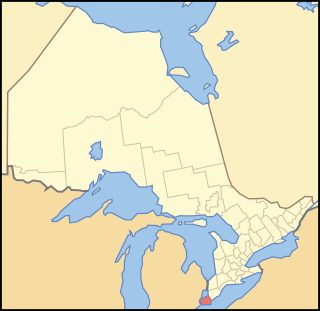
Essex County is a primarily rural county in Southwestern Ontario, Canada comprising seven municipalities: Amherstburg, Kingsville, Lakeshore, LaSalle, Leamington, Tecumseh and the administrative seat, Essex. It is the country's southernmost county and had a population of 181,530 as of the Canada 2016 Census.

The Fugitive Slave Act or Fugitive Slave Law was passed by the United States Congress on September 18, 1850, as part of the Compromise of 1850 between Southern interests in slavery and Northern Free-Soilers.
Black Canadians is a designation used for people of full or partial sub-Saharan African descent, who are citizens or permanent residents of Canada. The majority of Black Canadians are of Caribbean origin, though the population also consists of African-American immigrants and their descendants, as well as many native African immigrants.

Lakeshore is a Municipality on Lake St. Clair, in Essex County, Ontario, Canada. The Municipality was incorporated in 1999 by amalgamating the Town of Belle River with the townships of Maidstone, Rochester, Tilbury North, and Tilbury West. It is part of the Windsor census metropolitan area.
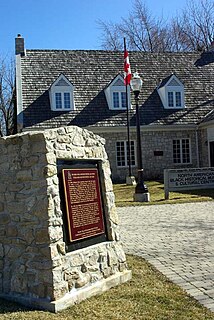
Amherstburg Freedom Museum, previously known as 'the North American Black Historical Museum', is located in Amherstburg, Ontario, Canada. It is a community-based, non-profit museum that tells the story of African-Canadians' history and contributions. Founded in 1975 by local residents, it preserves and presents artifacts of African-Canadians, many of whose ancestors had entered Canada as refugees from United States slavery. They found it relatively easy to enter Canada from across the Detroit River.

Henry Walton Bibb was an American author and abolitionist who was born a slave. After escaping from slavery to Canada, he founded an abolitionist newspaper, The Voice of the Fugitive. He returned to the US and lectured against slavery.

The John Freeman Walls Historic Site and Underground Railroad Museum is a 20-acre (81,000 m2) historical site located in Puce, now Lakeshore, Ontario, Canada, about 25 miles east of Windsor. Today, many of the original buildings remain, and in 1985, the site was opened as an Underground Railroad Museum. The site forms part of the African-Canadian Heritage Tour in Southern Ontario.
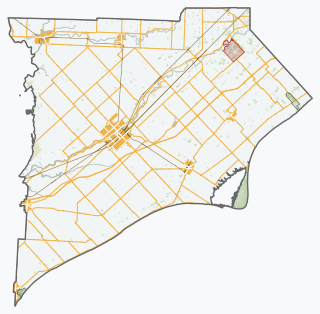
South Buxton is an unincorporated community in Chatham-Kent, Ontario, Canada. The population is approximately 78. The majority of the population is retirees. South Buxton has only three roads and a single church. It is near the South Buxton raceway. The closest towns are North Buxton and Merlin.

The Ward was a neighbourhood in central Toronto, Ontario, Canada in the 19th and early 20th centuries. Typically regarded, at the time, one of the earliest slums in Toronto, the neighbourhood was a location where many new immigrants first settled.
Old Sandwich Town is located along the Canada–US border of the Detroit River, and was established in 1797. It is considered one of the oldest, most historically significant settlements in Ontario and has been the site of several historically significant events in Ontario's history. Many historic buildings remain in Old Sandwich Town and the area hosts an annual festival to celebrate its heritage. The area is now a neighbourhood of the city of Windsor.
Hiram Wilson was an anti-slavery abolitionist who worked directly with escaped and former slaves in southwestern Ontario. He attempted to improve their living conditions and help them to be integrated into society by providing education and practical working skills. He established ten schools to educate free blacks in southwestern Ontario. Wilson worked extensively with Josiah Henson to establish the British-American Institute and the Dawn Settlement in 1841. Wilson was a delegate to the 1843 World Anti-Slavery Convention in London, England. Wilson eventually resigned from the British-American Institute and moved to St. Catharines, Ontario, where his home was the final terminal for the Underground Railroad.

North Buxton is a dispersed rural community located in Southwestern Ontario, Canada. It was established in 1849 as a community for and by former African-American slaves who escaped to Canada to gain freedom. Rev. William King, a Scots-Irish/American Presbyterian minister and abolitionist, had organized the Elgin Association to buy 9,000 acres of land for resettlement of the refugees, to give them a start in Canada. Within a few years, numerous families were living here, having cleared land, built houses, and developed crops. They established schools and churches, and were thriving before the American Civil War.
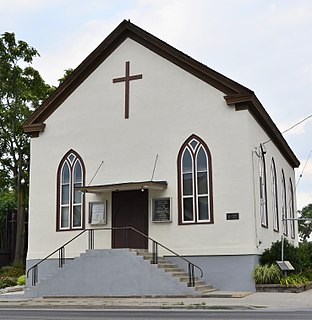
The British Methodist Episcopal (BME) Church, Salem Chapel was founded in 1820 by African-American freedom seekers in St. Catharines, Ontario. It is located at 92 Geneva St., in the heart of Old St. Catharines. The church is a valued historical site due to its design, and its important associations with abolitionist activity.
The Queen's Bush was an unsettled area in Ontario, between Waterloo County, Ontario and Lake Huron where African Americans settled and established farms and a community. They built churches and schools. After growing to a settlement of more than 2,000, the land that they had farmed was claimed as Clergy reserves by the colonial government. Most residents were unable to pay for the land and migrated out of Queen's Bush.

James Theodore Augustus Holly was the first African-American bishop in the Protestant Episcopal church, and spent most of his episcopal career as missionary bishop of Haiti.
Mary Elizabeth Bibb was an American-born educator and abolitionist leader. She is considered by some to be the first female black journalist in Canada.
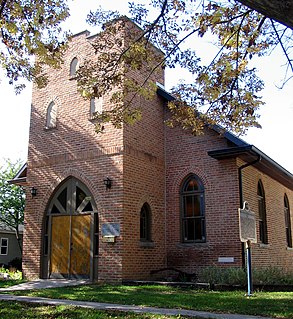
The Sandwich First Baptist Church, located in the Sandwich neighbourhood of Windsor, Ontario, was established to serve a community of refugees who had fled slavery on the Underground Railroad. The congregation was founded around 1840, and the current church building was constructed in 1851. It was designated a National Historic Site of Canada in 1999, and continues to function as a church.
Isaac J. Rice was a minister and missionary for fugitive enslaved people from the United States. He operated a mission for arriving black people and a large school for black children at Fort Malden at Amherstburg, Ontario. It was a major landing point for African Americans and the main station of the American Missionary Association.
References
- 1 2 3 4 5 6 "Settlements in Canada - Underground Railroad". PBS. Retrieved 2021-05-31.
- 1 2 3 "The Refugee Home Society". www.windsor-communities.com. Retrieved 2021-05-31.
- ↑ Bramble, Linda (1988), Black Fugitive Slaves In Early Canada, Vanwell History Project Series, ISBN 978-0-920277-16-4